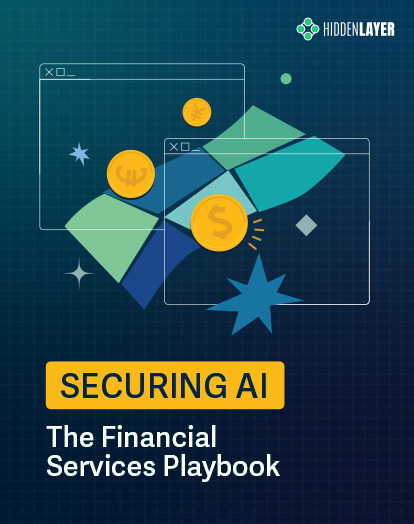Introduction
As AI advances at a rapid pace, implementing comprehensive security measures becomes increasingly crucial. The integration of AI into critical business operations and society is growing, highlighting the importance of proactive security strategies. While there are concerns and challenges surrounding AI, there is also significant potential for leaders to make informed, strategic decisions. Organizational leaders can effectively navigate the complexities of AI security by seeking clear, actionable guidance and staying informed amidst the abundance of information. This proactive approach will help mitigate risks and ensure AI technologies’ safe and responsible deployment, ultimately fostering trust and innovation.
Many existing frameworks and policies provide high-level guidelines but lack detailed, step-by-step instructions for security leaders. That’s why we created “Securing Your AI: A Step-by-Step Guide for CISOs.” This guide aims to fill that gap, offering clear, practical steps to help leaders worldwide secure their AI systems and dispel myths that can lead to insecure implementations. Over the next four weeks, we’ll cover understanding AI environments, governing AI systems, strengthening AI systems, and staying up-to-date on AI developments. Let’s delve into this comprehensive series to ensure your AI systems are secure and trustworthy.
Step 1: Establishing a Security Foundation
Establishing a strong security foundation is essential when beginning the journey to securing your AI. This involves understanding the basic principles of security for AI, setting up a dedicated security team, and ensuring all stakeholders know the importance of securing AI systems.
To begin this guide, we recommend reading our AI Threat Landscape Report, which covers the basics of securing AI. We also recommend the following persons to be involved and complete this step since they will be responsible for the following:
- Chief Information Security Officer (CISO): To lead the establishment of the security foundation.
- Chief Information Officer (CIO) & Chief Technology Officer (CTO): To provide strategic direction and resources.
- AI Development Team: To understand and integrate security principles into AI projects.
- Compliance and Legal Team: Ensure all security practices align with legal and regulatory requirements.
Ensuring these prerequisites are met sets the stage for successfully implementing the subsequent steps in securing your AI systems.
Now, let’s begin.
Step 2: Discovery and Asset Management
Begin your journey by thoroughly understanding your AI ecosystem. This starts with conducting an AI usage inventory. Catalog every AI application and AI-enabled feature within your organization. For each tool, identify its purpose, origin, and operational status. This comprehensive inventory should include details such as:
- Purpose: What specific function does each AI application serve? Is it used for data analysis, customer service, predictive maintenance, or another purpose?
- Origin: Where did the AI tool come from? Was it developed in-house, sourced from a third-party vendor, or derived from an open-source repository?
- Operational Status: Is the AI tool currently active, in development, or deprecated? Understanding each tool’s lifecycle stage helps prioritize security efforts.
This foundational step is crucial for identifying potential vulnerabilities and gaps in your security infrastructure. By knowing exactly what AI tools are in use, you can better assess and manage their security risks.
Next, perform a pre-trained model audit. Track all pre-trained AI models sourced from public repositories. This involves:
- Cataloging Pretrained Models: Document all pre-trained models in use, noting their source, version, and specific use case within your organization.
- Assessing Model Integrity: Verify the authenticity and integrity of pre-trained models to ensure they have not been tampered with or corrupted.
- Monitoring Network Traffic: Continuously monitor network traffic for unauthorized downloads of pre-trained models. This helps prevent rogue elements from infiltrating your system.
Monitoring network traffic is essential to prevent unauthorized access and the use of pre-trained models, which can introduce security vulnerabilities. This vigilant oversight protects against unseen threats and ensures compliance with intellectual property and licensing agreements. Unauthorized use of pre-trained models can lead to legal and financial repercussions, so it is important to ensure that all models are used in accordance with their licensing terms.
By thoroughly understanding your AI ecosystem through an AI usage inventory and pre-trained model audit, you establish a strong foundation for securing your AI infrastructure. This proactive approach helps identify and mitigate risks, ensuring the safe and effective use of AI within your organization.
Who Should Be Responsible and In the Room:
- Chief Information Security Officer (CISO): To oversee the security aspects and ensure alignment with the overall security strategy.
- Chief Technology Officer (CTO): To provide insight into the technological landscape and ensure integration with existing technologies.
- AI Team Leads (Data Scientists, AI Engineers): To offer detailed knowledge about AI applications and models in use.
- IT Managers: To ensure accurate inventory and auditing of AI assets.
- Compliance Officers: To ensure all activities comply with relevant laws and regulations.
- Third-Party Security Consultants: If necessary, to provide an external perspective and expertise.
Step 3: Risk Assessment and Threat Modeling
With a clear inventory in place, assess the scope of your AI development. Understand the extent of your AI projects, including the number of dedicated personnel, such as data scientists and engineers, and the scale of ongoing initiatives. This assessment provides a comprehensive view of your AI landscape, highlighting areas that may require additional security measures. Specifically, consider the following aspects:
- Team Composition: Identify the number and roles of personnel involved in AI development. This includes data scientists, machine learning engineers, software developers, and project managers. Understanding your team structure helps assess resource allocation and identify potential skill gaps.
- Project Scope: Evaluate the scale and complexity of your AI projects. Are they small-scale pilots, or are they large-scale deployments across multiple departments? Assessing the scope helps understand the potential impact and the level of security needed.
- Resource Allocation: Determine the resources dedicated to AI projects, including budget, infrastructure, and tools. This helps identify whether additional investments are needed to bolster security measures.
Afterward, a thorough risk and benefit analysis will be conducted. Identify and evaluate potential threats, such as data breaches, adversarial attacks, and misuse of AI systems. Simultaneously, assess the benefits to understand the value of these systems to your organization. This dual analysis helps prioritize security investments and develop strategies to mitigate identified risks effectively. Consider the following steps:
- Risk Identification: List all potential threats to your AI systems. These include data breaches, unauthorized access, adversarial attacks, model theft, and algorithmic bias. Consider both internal and external threats.
- Risk Evaluation: Assess the likelihood and impact of each identified risk. Determine how each risk could affect your organization in terms of financial loss, reputational damage, operational disruption, and legal implications.
- Benefit Assessment: Evaluate the benefits of your AI systems. This includes improved efficiency, cost savings, enhanced decision-making, competitive advantage, and innovation. Quantify these benefits to understand their value to your organization.
- Prioritization: Based on the risk and benefit analysis, prioritize your security investments. Focus on mitigating high-impact and high-likelihood risks first. Ensure that the benefits of your AI systems justify the costs and efforts of implementing security measures.
By assessing the scope of your AI development and conducting a thorough risk and benefit analysis, you gain a holistic understanding of your AI landscape. This allows you to make informed decisions about where to allocate resources and how to mitigate risks effectively, ensuring the security and success of your AI initiatives.
Who Should Be Responsible and In the Room:
- Risk Management Team: To identify and evaluate potential threats.
- Data Protection Officers: To assess risks related to data breaches and privacy issues.
- AI Ethics Board: To evaluate ethical implications and misuse scenarios.
- AI Team Leads (Data Scientists, AI Engineers): To provide insights on technical vulnerabilities and potential adversarial attacks.
- Business Analysts: To understand and quantify these AI systems’ benefits and value to the organization.
- Compliance Officers: To ensure all risk assessments are aligned with legal and regulatory requirements.
- External Security Consultants: To provide an independent assessment and validate internal findings.
Conclusion
This blog has highlighted the often neglected importance of security for AI amidst the pressure from organizational leaders and the prevalence of misinformation. Organizations can begin their journey toward a secure AI ecosystem by establishing a strong security foundation and engaging key stakeholders. Organizations can identify potential vulnerabilities and establish a solid understanding of their AI assets, starting with a comprehensive AI usage inventory and pre-trained model audit. Moving forward, conducting a detailed risk assessment and threat modeling exercise will help prioritize security measures, aligning them with the organization’s strategic goals and resources.
Through these initial steps, leaders can set the stage for a secure, ethical, and compliant AI environment, fostering trust and enabling the safe integration of AI into critical business operations. This proactive approach addresses current security challenges and prepares organizations to adapt to future advancements and threats in the AI landscape. As we continue this series, we will delve deeper into the practical steps necessary to secure and govern AI systems effectively, ensuring they remain valuable and trustworthy assets.
Read the next installment, Governing Your AI Systems.
e




